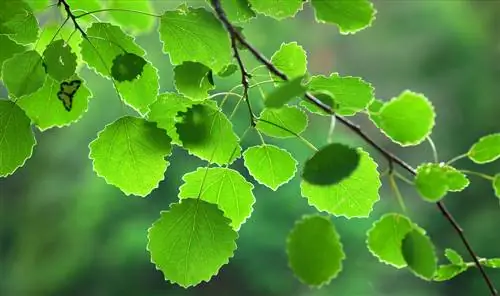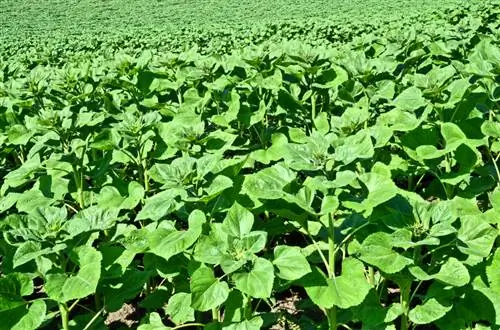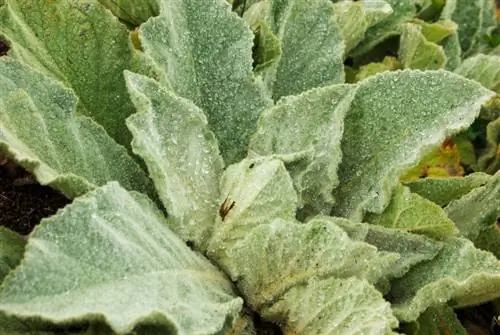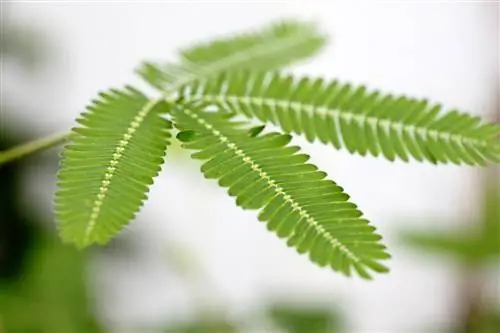- Author admin [email protected].
- Public 2023-12-16 16:46.
- Last modified 2025-01-23 11:21.
Espenlaub is famous for its trembling, which is immortalized in the corresponding saying. But why is that? The aspen leaves are unlikely to freeze; rather, the texture and shape of the leaves are responsible for this.
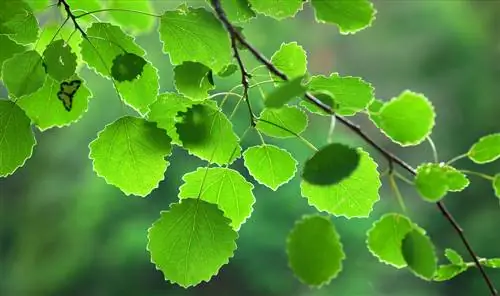
Why do aspen leaves tremble?
Aspen leaves tremble because they sit on long stems that are flattened at the bottom and have a delicate, light structure with a relatively wider base. These properties ensure high flexibility, which means they start to move with the slightest breeze.
The shape characteristics of the aspen leaf
The fact that the leaves of the aspen or quaking aspen begin to tremble at the slightest breeze has the following reason: On the one hand, they sit on very long stems that are also flattened on the underside. This makes them extremely flexible and reacts to the slightest air stimulus. The cellulose-rich wood of the quaking aspen also contributes to the very mobile character of the crown.
In addition, the equally delicately structured leaves with a wide base attach to these delicate stems. As a result, they offer the wind a comparatively large surface area to attack and constantly sway up and down.
The reasons for trembling again in brief:
- Long stem, flattened at the bottom
- Delicate, light leaf structure with a relatively wide base
One aspen, two leaf forms
As with most Populus species, aspen also shows an interesting phenomenon: two different leaf shapes form on the same individual. On the one hand, there are almost round leaves with a wavy lobed edge, and on the other hand, there are those in a clear, larger triangular shape with a more entire edge.
These different leaf types result from the fact that leaves form from the winter buds of the long shoots on the one hand and on the short shoots on the other hand. The long shoots have normal to rapid linear growth, while the short shoots have reduced growth. Of course, this results in different basic requirements for leaf formation. The triangular leaves on the short shoots are also slightly shorter-stemmed than the round, wavy-edged long shoot leaves.
The aspen leaves are opposite each other on the branches. Their surface is smooth and has a fine, medium green color. The undersides are a little lighter.
The leaf bud shoots are yellowish to brown-red in color and retain this color for the first time after budding.
Beautiful, golden yellow autumn colors
As the days get shorter, the aspen dresses in a wonderfully pure, golden-yellow foliage dress that gracefully underlines the character of the delicately structured crown. The golden yellow color can shine particularly brightly in autumn light. When the small leaves gradually rain down from the crown, a decorative mottled carpet of leaves forms on the ground.

